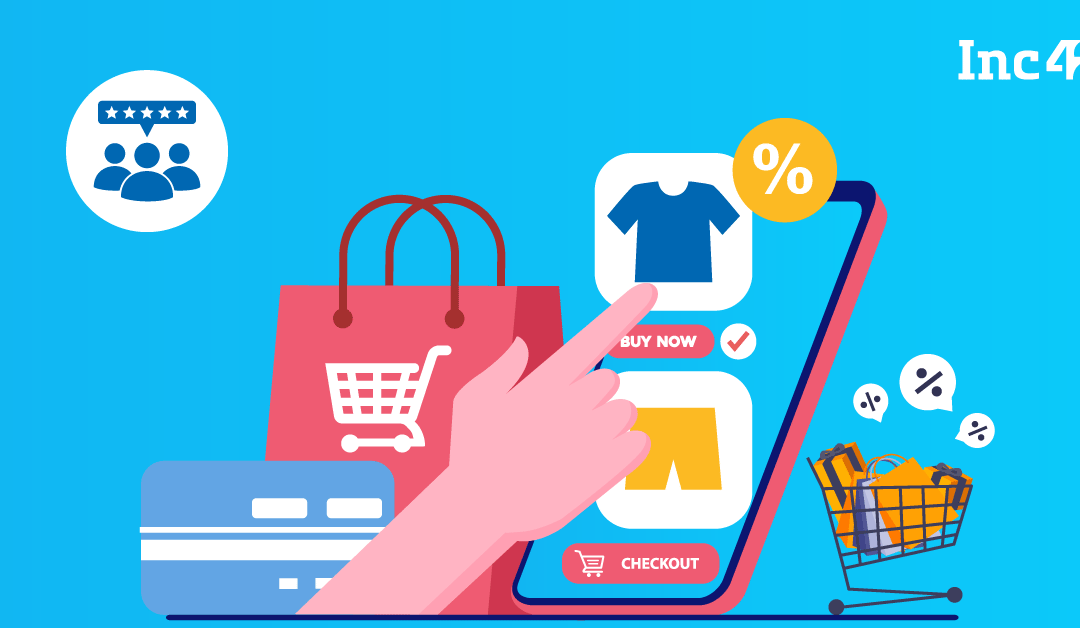Businesses need finely-tuned personalisation approaches that furnish highly personalised buying experiences
Since checkout is the final leg of purchase, brands should aim to make it as smooth as possible by removing all points of friction
Fast checkout is one approach to achieving this. Brands can pre-set the shipping address and payment methods on behalf of the customers, allowing them to save time and effort
Personalisation is becoming increasingly crucial for ecommerce businesses as it allows them to tailor the customer experience to fulfil individual preferences. According to a survey, 80% of the buyers are eager to do business with a brand that provides customised experiences, while 90% of the respondents find personalisation attractive.
Consumer attention is vital as competition in online retail is likely to intensify as the country’s ecommerce market grows at a fast clip. Data too, points towards this. As per the India Brand Equity Foundation (IBEF) report, the overall ecommerce sector in India could overtake more mature markets to evolve as the third largest market in the world, with a whopping $350 Bn market size by 2030.
Broadly speaking, in ecommerce, personalisation refers to framing dynamic shopping experience strategies tuned to individual customers’ unique expectations and purchasing habits.
This means that instead of a one-size-fits-all approach to cater to a comprehensive range of user types, businesses devise finely-tuned personalisation approaches that furnish highly personalised buying experiences.
Understanding the Benefits of Personalisation In Checkout
Marketers report an average sales increase of 20% after implementing personalisation. This is huge, and it should not surprise you as users don’t just want personalisation, they demand it.
In ecommerce, a key area of personalisation is checkout. This is usually the final leg of purchase and brands should aim to make it as smooth as possible by removing all points of friction.
Here are some of the benefits of personalisation in checkout:
Faster Checkout: One of the primary advantages of personalisation is speeding up the checkout process. You can do it by pre-setting the shipping address and payment methods on behalf of the user. Faster checkouts help customers save time and effort.
Enriched Customer Experience: Many factors could influence your customers, but nothing impacts them more than their experience. You must understand what your users want and why in order to succeed in this new marketing world.
Nearly 40% of customers moved away from an online shopping portal because they were overwhelmed by too many options. Personalisation in checkout narrows down choices and streamlines buying process.
So, the template is straightforward—personalise the checkout process, enhance the customer experience and take your ecommerce business to the next level.
Improved Conversion Rates: A general discussion in sales and marketing that you might have encountered is that leads stimulated with targeted content increase sales opportunities. The same tends to happen with personalised checkout processes.
Personalisation in checkout can boost conversion rates by making it easier for buyers to finish their purchases. With fewer steps to purchase products, customers are more likely to follow through and place the order.
Higher Average Order Value: Winning the ecommerce game is about selling more and generating more revenue. One way to accomplish this is by making the customer order the wishlist items plus additional products.
Personalisation helps you increase the average order value by recommending relevant products and offering promotions during checkout. Customers get tempted to buy more products when product suggestions relate to their purchase or complement their order.
Increased Customer Loyalty: You can build a healthy relationship with your customers by showing them you care about their needs. This way, not only do you improve user experience but also customer loyalty.
Data collection and analysis are crucial for optimising the customer experience and augmenting sales. Analytics are critical because they allow you to make more informed decisions vis-à-vis drafting a streamlined checkout process.
In fact, data is a must to even think about personalisation. Ecommerce businesses can gain a wealth of valuable insights into customer behaviour and preferences by collecting and analysing customer data.
As per Statista, global retail ecommerce sales stood at $5.7 Bn in 2022, which will increase in the coming days. Therefore, you have a tremendous opportunity to capitalise on and grow your ecommerce business.
In order to do so, you will require potent tools and sound methods to collect, manage and use data to grow. There are several methods and tools to collect users’ data in ecommerce:.
Here is a list of some of the most common ones:
- Web Tracking
- Surveys
- User Registration
- Social Media
- Cart abandonment
- Marketing Analytics
- Purchase histories
- Browsing behaviours
- Transactional data
- Incentives
That being said, if you are looking to improve your ecommerce business, consider implementing the following strategies and analyses:
- Abandoned cart analysis
- Customer behaviour analysis
- Payment method analysis
- Shipping and fulfillment analysis
- A/B testing
Personalisation can be tricky. According to a Gartner survey, roughly two-thirds or 63% of digital marketing leaders find it tough to deliver personalised experiences to their consumers.
Some of the common obstacles that businesses may encounter when implementing personalisation include issues with data quality, quantity, segmentation and targeting. Privacy concerns can also be a challenge, as customers may be hesitant to share too much personal information.
Further, omnichannel fulfilment can also be a roadback, as businesses need to ensure that personalised experiences are delivered across multiple channels and touchpoints, while keeping up with customer preferences.
Besides technology, brands sometimes overlook the human element of personalisation . However, investing in skills and expertise in the right people is important to develop and execute personalised strategies.
In order to optimise the checkout experience and increase conversions, it is important for ecommerce businesses to implement effective personalisation strategies.
Some of these include recommending relevant products, using dynamic pricing, geotargeting, retargeting and abandoned cart emails, and simplifying the checkout process.
Personalisation in checkout is a crucial capability for digital native businesses. With a personalised and seamless checkout process, ecommerce businesses can stay competitive and fulfil the evolving demands of today’s customers, based on several factors that we discussed.
As the ecommerce landscape continues to evolve, businesses that prioritise personalisation are likely to enjoy a competitive advantage in attracting and retaining customers.





